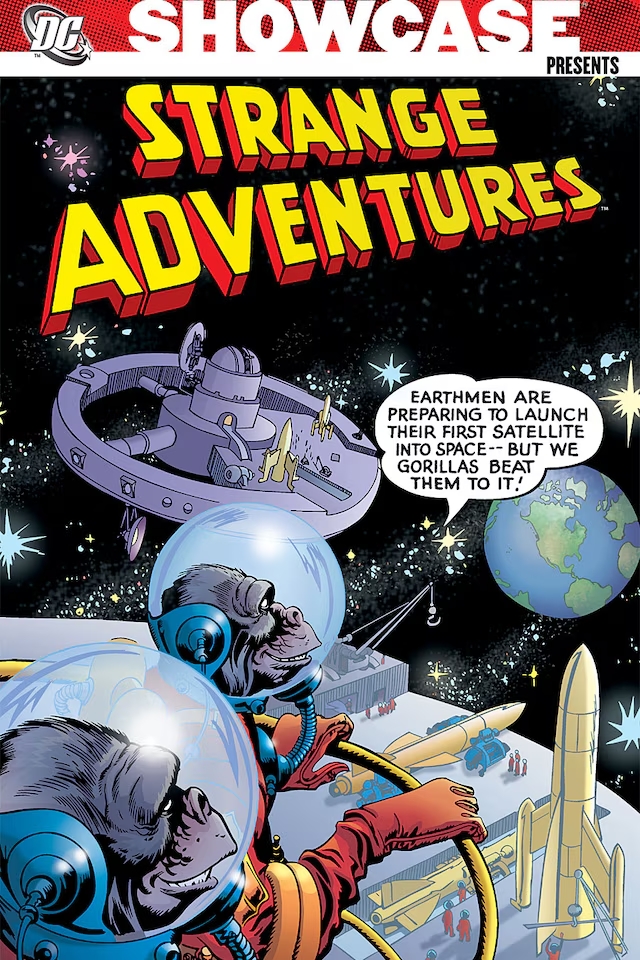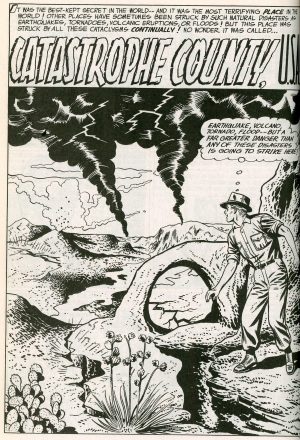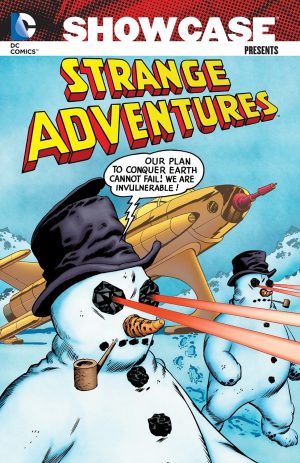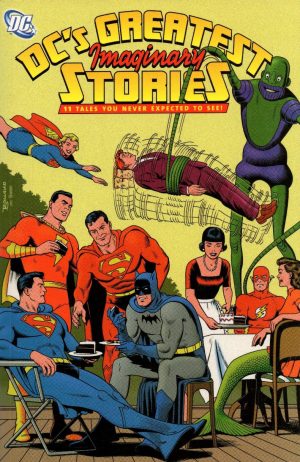Review by Win Wiacek
In 1950 Strange Adventures arrived packed with short adventures from jobbing SF prose writers offering done-in-one dramas and new heroes such as Chris KL99, Captain Comet, the Atomic Knights and more. It introduced wide-eyed youngsters to a fantastic yet intrinsically rationalist universe and all the potential wonders and terrors it might conceal.
Astonishingly there are still no archival collections of this groundbreaking series, nor companion title Mystery in Space, so this economical monochrome collection and Volume 2 are the sole book reprints. On a thematic note, a general but by no means concrete rule of thumb was the Strange Adventures generally occurred on Earth or were at least Earth-adjacent, whilst Mystery in Space offered readers the run of the rest of the universe. Moreover, many plots, gimmicks, maguffins and even art and design would be cleverly recycled for the later technologically-based superhero revivals.
Conceived and edited by the brilliant Julie Schwartz, this mind-blowing, physics-challenging monochrome colossus picks up early in 1955 and finishes late in 1956, with the opening issue providing the general tone, supplying four classic vignettes. ‘The Electric Man!’ by John Broome and Sy Barry has a geologist in search of new power sources accidentally unleashing destructive voltaic beings from the centre of the Earth. As always – and in the grand tradition of pulp sci-fi editor John Campbell – human ingenuity/decency generally solves the assorted crises efficiently and expeditiously.
‘The World’s Mightiest Weakling!’ from Otto Binder and Carmine Infantino offers a charming yet impossible conundrum after a puny stripling gains incomprehensible mass and density during the course of an experiment. ‘Interplanetary Camera!’ by Binder and Gil Kane grants a photographer a glimpse of the unknown when he finds an alien image recorder and uncovers a plot to destroy Earth.
The issue concludes with another Binder blinder in the taut thriller ‘The Robot Dragnet!’, with Harry Sharp illustrating a rip-roaring romp of rampaging robotic rage. This was actually sequel to an earlier yarn but sufficiently and cleverly recapped so that there’s no confusion or loss of comprehensibility.
The flights of fancy continue in six page bursts from the cream of the era’s writers and artists, setting the standard for mind-boggling all-ages fantasy fiction. With stunning, evocative covers from such stellar art luminaries as Murphy Anderson, Carmine Infantino, Gil Kane and Ruben Moreira, this titanic tome is a perfect portal to other worlds and, in many ways, far better times.





